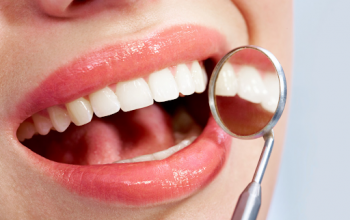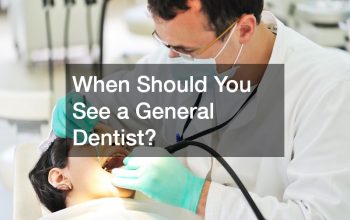
Dentistry is a popular branch of the modern American healthcare system, and in fact it ranks among the top 10 most trusted and ethical professions in the United States. Every year, millions of Americans visit the dentist for regular checkups, cleaning, and exams, and parents may bring their children to family dental clinics or family dentist practices for care. When a person or a family moves to a new area, they may want to look up dental clinics in their new city or county, and a specific Internet search can help show some promising offices. A cosmetic dental clinic may appeal to adult Americans, and parents may look for family or pediatric dental clinics for their children. What is there to know about getting dental implants when visiting a cosmetic dentist?
Find a Dentist Near You
When a family moves to a new city or county, they will want to find local healthcare facilities relevant to their needs. This may include pediatric urgent care centers, a regular hospital, private physicians offices, and of course, dental clinics, too. These dental clinics and offices can be found with an Internet search with the right keywords. Someone who moves to Miami may enter “best pediatric dentists in miami”, or someone in Boston may look up “top rated cosmetic dentists in boston MA” and find a whole list of results. A client may even enter their ZIP code or their street address to keep results local in a large city.
When results appear, the client may strike out those that are too far or those that don’t accept their health insurance, and visit the rest in person. When visiting dental clinics in person, a client may get a fair impression of the clinic and its staff, and the client may also consult the dentists and dental assistants working there. The client may review the dentists’ credentials such as their work history, educational background, awards and recognition, and more. If the client is looking for a pediatric or family dentist, they should bring their child along, too. The child may form their own impression, and the parents may see if their young son or daughter feels comfortable and relaxed there. The family may repeat this process a number of times until they find the ideal dental office, and sign up as regular patients there.
Basic Dental Care
Not all trip to the dentist involve gruesome procedures such as pulling out infected teeth. Most often, patients are going in for routine checkups and X-rays, and children may get sealant put on their teeth to protect them further. Children may also be taught basic dental care at home such as brushing teeth regularly and avoiding trauma to the teeth. Children should refrain from chewing on hard items, and they can wear mouth guards while playing sports.
Meanwhile, older patients may look for dental implants, often to restore a tooth’s shape or function. Porcelain veneers are one such route, which are white plates that fit right over a patient’s enamel to restore their teeth’s white and dazzling appearance. In other cases, patients get tooth whitening done, such as using specialized gels and pastes. Most beauty standards call for white and straight teeth, and teeth may get discolored from tobacco use or tartar buildup. Thus, many Americans visit cosmetic dentists to get their teeth whitened again, as discolored teeth are often considered ugly and embarrassing.
Implants may also restore missing material. Many adult patients get crowns fitted on, which are artificial enamel atop a tooth that may cover a cracked or worn down tooth. This protects the natural enamel and restores the tooth’s shape for eating and speech. Meanwhile, if teeth are crooked, the patient may have clear plastic retainers molded for them and fitted over the teeth. These discreet plastic retainers help align the teeth and make a patient’s smile more attractive.
Missing teeth can be replaced with dental bridges. A bridge is a replica tooth that is molded for the patient’s mouth, then placed in a tooth gap and held in place with covers that slip over the real teeth on either side. This secured, false tooth can restore the patient’s smile and also make eating and speech easier and more convenient.


